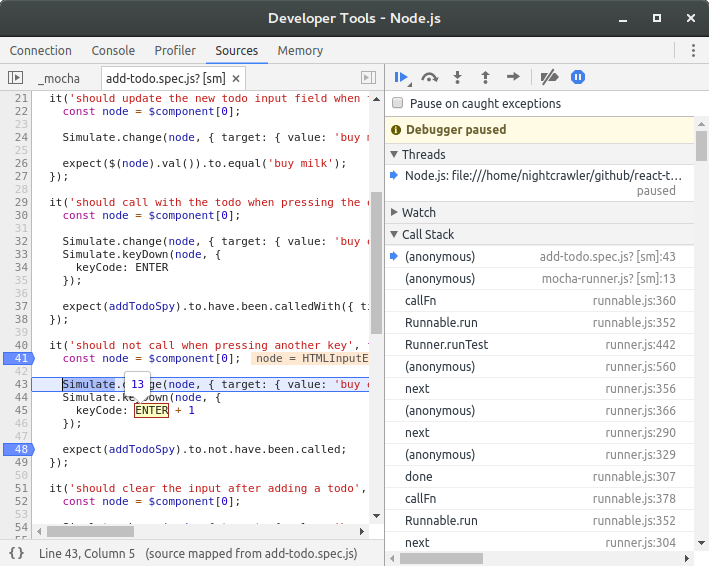- Mocha - testing framework
- Chai - assertion library
- Sinon - mocking library
- jsdom - server side DOM
- Babel - transpile ES6 (including JSX) to ES5
- Webpack - module bundler
- Istanbul - code coverage
- WebdriverIO - Selenium 2.0 bindings for NodeJS
- Selenium - Web Browser Automation
- Docker - containerization platform
- Mugshot - visual regression testing
Running npm start will spin up a Docker container that will install the npm
packages and start a Webpack dev server with hot reloading. Changes to the
source code on the host will be reflected inside the container. Having the app
in the container removes the need for devs to install Node and the npm packages
on their machines. This in turn makes it very easy to get rid of problems where
developers get out of sync with the Node version or have stale packages
installed.
If you need to stop/restart the container you can use npm stop. Given that you
don't change the package.json file, the npm packages will be cached next time
you start the container.
If for some reason you prefer to install everything locally, you can use npm run _start instead.
npm run test:node will run the tests in Node using Mocha. This is useful for
a rapid feedback loop. You can also watch them for changes with npm run test:node:watch. jsdom is used for providing a browser like environment.
npm run test:node:debug will run the same Mocha tests and attach the Node
inspector. Use Chrome to go to chrome://inspect and debug
the tests with the Chrome dev tools.
The tests automatically generate coverage reports using Istanbul. You can find
them in the tests/results/coverage
folder. Both Node tests and GUI tests report coverage which allows
reaching 100% coverage for those cases where Node tests are not enough (scroll
event handlers, browser quirks, etc.).
The tests open actual browsers (Chrome and Firefox) and control them through
Selenium. Everything happens in Docker containers for stable and
reproducible builds.
If you want to also take a screenshot after a GUI test and
compare it on the next runs, simply use vit (visual it) instead of
it.
import { describe, vit } from './suite.js';
describe('My app', () => {
vit('should look the same', async browser => {
await browser.click('.foobar');
});
});The screenshot will be taken at the end of the test definition only if there were no exceptions thrown. Think of it as an extra assertion at the end of the test.
If there are any visual changes a diff will be created highlighting them and the test will fail. If the changes are deliberate you should commit the new screenshot and rerun the tests. You can find the new screenshots and diffs in the tests/gui/screenshots folder.
TODO: these tests don't benefit from Jest's parallel runner because image comparison is super slow in a Jest sandbox.
Add debugger statements in your tests and run npm run test:gui:debug.
The tests won't start until you connect to the debugger by going to
chrome://inspect and selecting the local debugger target.
You're going to need Chrome
55+ for this to work.
Once in the inspector, press the continue execution button and the tests will start running.
Alongside debugging the test code, you can also follow the state of the browser
by connecting with VNC to localhost:5900 with the
password secret.






